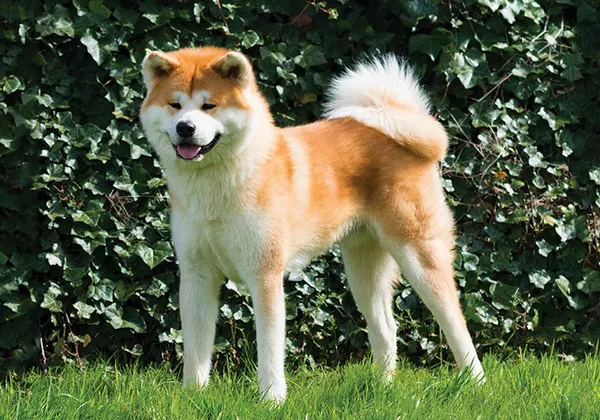As responsible pet owners, it is essential to be aware of the various health conditions that can affect our furry companions. Glaucoma, a serious eye condition that can lead to vision loss, is not exclusive to humans; it can also affect dogs. Understanding glaucoma in dogs, its causes, symptoms, and treatment options, is crucial in ensuring the well-being of our canine friends.
1. What is Glaucoma?
Glaucoma is a group of eye conditions that result in increased pressure within the eyeball, known as intraocular pressure (IOP). This elevated pressure can cause damage to the optic nerve and, if left untreated, can lead to irreversible blindness. In dogs, glaucoma can be classified into two main types: primary and secondary.
2. Primary Glaucoma
Primary glaucoma in dogs is hereditary, and certain breeds are more susceptible to this condition. Breeds like Cocker Spaniels, Basset Hounds, and Siberian Huskies have a higher predisposition to primary glaucoma. This form of glaucoma is caused by a malformation of the eye’s drainage angle, which obstructs the outflow of aqueous humor, the fluid within the eye. As a result, the fluid accumulates, leading to increased IOP and potential damage to the optic nerve.
3. Secondary Glaucoma
Secondary glaucoma in dogs occurs as a result of another underlying eye condition or injury. Conditions such as uveitis (inflammation of the eye’s middle layer), lens luxation (displacement of the lens), or intraocular tumors can lead to increased IOP and secondary glaucoma. Unlike primary glaucoma, this type can affect dogs of any breed and age.
4. Symptoms of Glaucoma in Dogs
Recognizing the early signs of glaucoma in dogs can make a significant difference in preserving their vision. Some common symptoms to watch out for include:
Red or Bloodshot Eyes: Increased pressure in the eyes can cause the blood vessels to dilate, resulting in a red or bloodshot appearance.
Cloudy or Bluish Eyes: The cornea may appear cloudy or bluish due to fluid buildup and edema.
Squinting or Blinking: Dogs with glaucoma may squint or blink excessively due to eye discomfort.
Watery Discharge: Increased tearing or a watery discharge from the eyes might be noticeable.
Loss of Vision: You may observe your dog bumping into objects or becoming hesitant in unfamiliar surroundings.
Enlargement of the Eyeball: In some cases, the affected eye may appear larger than the other due to increased pressure.
5. Diagnosis of Glaucoma
If you suspect that your dog may have glaucoma or if you notice any of the above symptoms, it is crucial to seek veterinary attention promptly. Early diagnosis and intervention can significantly improve the chances of preserving your dog’s vision. During the veterinary visit, the following diagnostic procedures may be performed:
Tonometry: This test measures the intraocular pressure using a specialized instrument called a tonometer. It is a quick and painless procedure that helps confirm the presence of glaucoma.
Gonioscopy: For cases of primary glaucoma, gonioscopy is used to assess the drainage angle of the eye to determine if the glaucoma is open-angle or closed-angle.
Ophthalmic Examination: The veterinarian will conduct a comprehensive eye examination to check for any signs of glaucoma, such as cloudiness of the cornea, dilation of the pupil, or enlargement of the eyeball.
Ultrasound: In cases where the view inside the eye is obstructed, ultrasound imaging may be used to evaluate the internal structures.
6. Treatment Options for Glaucoma
The treatment approach for glaucoma in dogs aims to reduce intraocular pressure, alleviate pain, and preserve vision whenever possible. Depending on the severity and type of glaucoma, the following treatment options may be considered:
Medication: In mild cases or as a temporary measure before surgery, eye drops or oral medications may be prescribed to reduce intraocular pressure.
Laser Therapy: Laser treatment can be used in some cases of primary glaucoma to improve the drainage of fluid from the eye, thus reducing the intraocular pressure.
Surgery: Surgical intervention may be necessary for certain cases of glaucoma. Procedures like gonioimplantation, where a device is placed in the eye to improve fluid drainage, or endoscopic cyclophotocoagulation (ECP), which reduces fluid production, are potential options.
Enucleation: In cases of advanced glaucoma where the eye is severely damaged and causing pain, surgical removal of the eye (enucleation) may be the best option to alleviate suffering.
7. The Importance of Timely Intervention
Glaucoma is a progressive and painful condition that can lead to irreversible vision loss. It is vital to remember that early detection and intervention can make a significant difference in managing glaucoma in dogs. Regular eye check-ups with a veterinarian are crucial, especially for dog breeds predisposed to glaucoma.
8. Monitoring the Other Eye
If your dog is diagnosed with glaucoma in one eye, it is essential to closely monitor the unaffected eye regularly. The chance of developing glaucoma in the other eye is significantly higher, and early detection can lead to better outcomes.
9. Living with a Blind Dog
In some cases, despite the best efforts, glaucoma may lead to irreversible blindness. However, with a supportive and caring environment, blind dogs can lead happy and fulfilling lives. Pet owners can help their blind dogs adapt by maintaining a consistent living space, using verbal cues, and providing ample mental and physical stimulation.
10. Conclusion
Glaucoma is a serious eye condition that can affect dogs, leading to vision loss if left untreated. Recognizing the symptoms and seeking prompt veterinary attention can significantly improve the chances of preserving a dog’s vision. Regular check-ups, especially for breeds prone to glaucoma, are essential in catching this condition early. With the right treatment and care, dogs with glaucoma can continue to live fulfilling lives, even if they experience vision loss. As responsible pet owners, staying informed about glaucoma in dogs empowers us to make the best decisions for our canine companions’ eye health and overall well-being.


